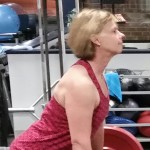Coaches Corner: How to Assess Your Athletes’ Performance Needs
This article was the first in a three part series published in Game Day Youth Sports magazine in May 2013
Coaches today have a very tough job. They all have high expectations and minimal time to achieve them. This is going on from the professional ranks down to the youth leagues. Coaches are expected to win today no matter what the circumstances. But how do you know if your team is really ready to compete?
One thing that I always tell my athletes and parents is that to be a better “pick your sport” athlete you cannot just play more of that sport. The best football, soccer, baseball and basketball players all have one common characteristic; they are great athletes. So by default, a team with the best athletes will always be able to compete. Now the question becomes how to assess your athletes’ performance needs?
As a coach you have ample time to see what your athletes are doing right or wrong, but you do need to know what you are looking for. There are four primary areas that you want to consider while assessing your athletes:
The Head: Should be basically still and level while running. Problems occur when the head moves side to side or up and down. Issues with the head can lead directly to problems with the rest of the body.
The Arms: They must move aggressively from the shoulders and in a direct line from hip to cheek. Inefficiency develops when they cross the body or stay too low. Another major issue is when movement comes from the elbow.
The Torso: Like the head it should be relatively still but with a slight forward lean. Many of the issues of the torso are directly correlated to other areas of the body, but still need to be addressed. These issues include leaning forward, leaning back and twisting side to side.
The Legs: Motion should come from the knees with limited back kick. The feet also need to hit the ground on the balls. Major issues occur when the legs reach out in front, kick up behind or just barely come off of the ground. The most common issue in youth is landing on flat feet while running. This will derail any thoughts of being fast.
Once you identify these issues it is time to correct them and move forward. If you as a coach have adequate knowledge of speed and agility techniques then you can personally work on the problems. If you do not, don’t try to do some drills that you used to do when you were younger, they never have the same effect. You need to locate a qualified speed coach, like at SFX, to work with your athletes and get them right.
Now I know that you are asking if there is anything that you can do on your own if you want to help your athletes on a basic level. Well follow along for the next couple of months while I discuss each area in more depth and give you simple remedies to help correct each issue.

Leave a Reply